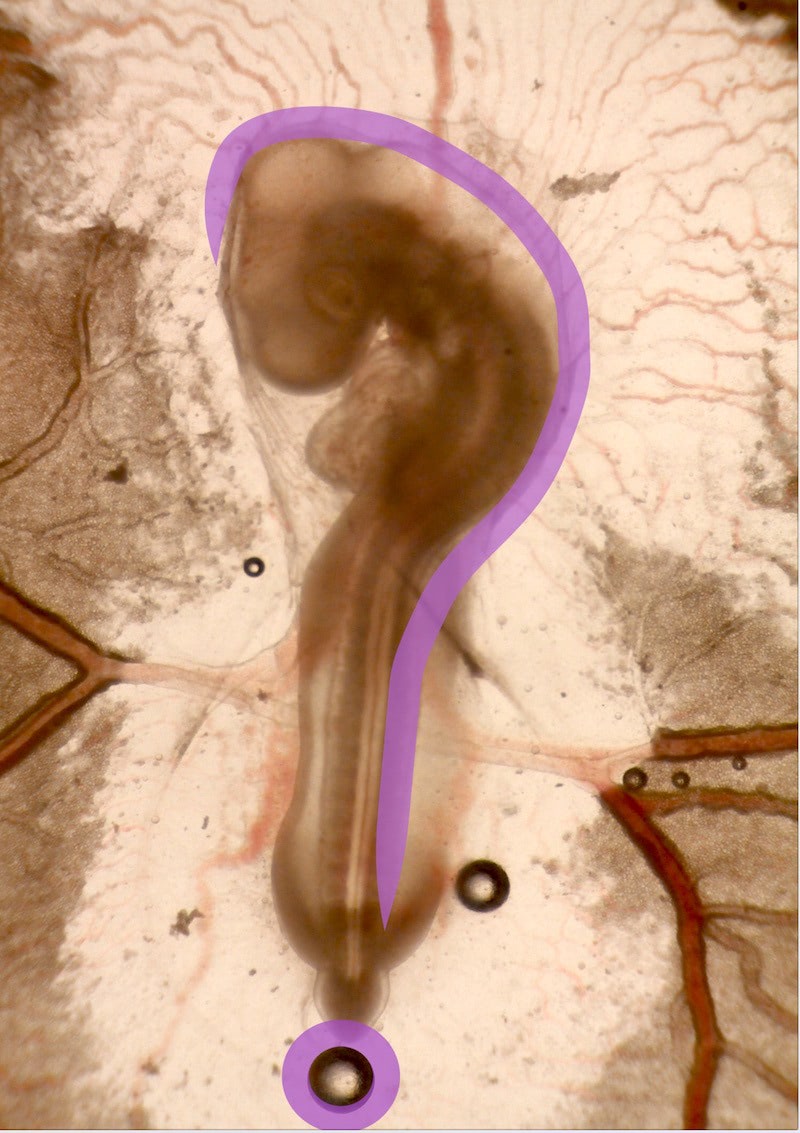- Undergraduate
Bachelor's Degrees
Bachelor of ArtsBachelor of EngineeringPartner School Dual-DegreeUndergraduate AdmissionsUndergraduate Experience
- Graduate
Doctoral Degrees
Doctor of PhilosophyPhD Innovation ProgramDoctor of Medicine-PhDGraduate AdmissionsGraduate Experience
- Research
- Entrepreneurship
- Community
- About
-
All Thayer News

In an abnormal chick embryo, the heart loops to the left-hand side and the brain also turn leftwards, forming a shape that resembles a question mark. In a normal embryo the opposite is true, i.e., the heart loops to the right-hand side and the brain also turn right. In this paper, we identified the source and magnitude of the physical force necessary to make the brain twist and discovered that the heart looping direction mechanically determines the brain twisting direction.
Dartmouth Engineering Professor Uncovers the Role of Mechanical Forces in Embryonic Development
Nov 09, 2016
"The rightward torsion of the brain is one of the earliest organ-level left-right asymmetry events in development," explains Dartmouth engineering professor Zi Chen, lead author on a paper entitled, "How the embryonic chick brain twists," published online yesterday by the Royal Society journal, Interface.

In an abnormal chick embryo, the heart loops to the left-hand side and the brain also turn leftwards, forming a shape that resembles a question mark. In a normal embryo the opposite is true, i.e., the heart loops to the right-hand side and the brain also turn right. In this paper, we identified the source and magnitude of the physical force necessary to make the brain twist and discovered that the heart looping direction mechanically determines the brain twisting direction.
"Significant birth defects can result when the left-right symmetry is perturbed, including inversion of the positions of visceral organs," continues Chen.
In development, a combination of intricately orchestrated biochemical and physical cues combine to generate embryonic form in a process termed "morphogenesis." This work clarifies, for the first time, the mechanical origin of brain torsion and the progression of left-right asymmetry in early development. From a broader perspective, the study highlights the necessity to view development not just from the traditional lens of molecular genetics but also mechanics in order to construct a more complete picture of the concerted processes in embryonic development. For example, by switching the chirality of the looping heart, the torsional direction of the brain is altered, suggesting that the left-right asymmetry in the heart can be transferred to the asymmetry in the brain development through mechanics. Furthermore, by replicating these results with a physical model, Chen and his team show that a mechanical mechanism is sufficient in reproducing the results observed in vitro.
"Our work uncovers the role of mechanical forces in this morphogenetic process and will open new venues of research on how molecular genetics and mechanical factors cooperatively regulate morphogenesis in development," says Chen.
For contacts and other media information visit our Media Resources page.
